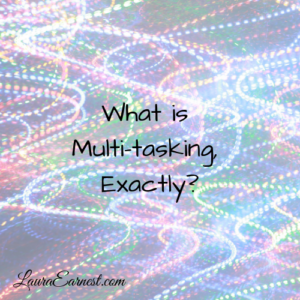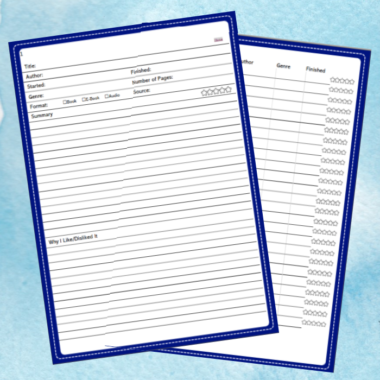
What is Multi-tasking, Exactly?
Back about 10 years ago, multi-tasking was touted as the way to get more done. Doing two things at once is better than one, after all, right? Not so fast…(literally and figuratively!)
When I first heard about multi-tasking, I really thought it was a good idea. After all, who doesn’t want to do two things at once? But I quickly realized that when I was doing two things that required the same skills/senses/appendages, I seemed to lose track of what I was doing altogether.
Today we’ll look at what multi-tasking is, why it is bad, and what to do instead.
Multi-tasking
Multi-tasking is doing two things at once. However, there is a subtlety here that makes all the difference. Multitasking is doing two things at once that require the same senses/skills/appendages.
It’s writing an email when you’re in a meeting. Or washing the dishes while trying to feed the baby. Or talking on the phone while driving. Or watching a movie while playing Words with Friends.
And it’s not successful.
Multi-tasking doesn’t work because it’s not possible to do two things with the same skills/senses/appendages at once. You end up task splicing, which is moving quickly between tasks.
That may not sound like a big deal until you realize there is a time and energy cost to doing that. Every time you switch tasks requires time and brain energy to adjust.
What that means is multitasking between two tasks will actually take you longer than if you completed one and then did the other.
That’s not productive.
Multi-threading
Multi-threading, on the other hand, is like having a bunch of plates spinning on sticks.

You start one spinning, move on to the next, and the next, and then come back to the first one as needed to keep it spinning. You are only giving your attention to the one plate at a time, and letting it go about its business of spinning as you attend to the next.
This is a better productive model.
How to Stop Multi-tasking
Multi-tasking can be stopped, but like any other bad habit, it takes time, effort, and a replacement. I broke my multi-tasking habit with a stack of small sticky notes.
Whenever I noticed myself starting to multi-task, I wrote what I was doing on the sticky and placed it in my field of vision. It was enough to keep me on task.
I also keep a piece of paper near me all the time so I can quickly jot down those things that threaten to become multi-tasking sessions. That way I can attend to them later, knowing they won’t get lost in my swamp of a brain.
How to Find Multi-threading opportunities
Multi-threading, on the other hand, is a good thing to look for. I generally do this with household and work tasks.
Today I will throw in a load of laundry, make a cake, then clean the living room carpet. Tomorrow at work I will kick off the process to load a day’s worth of data, and while that is happening, move to another virtual desktop and do code reviews.
To find multi-threading activities, look for things that will take a while to complete, and find how you can use that time to its best advantage.
Conclusion
Multi-tasking is bad. Multi-threading can be very useful. Learn to tell the difference; avoid the multi-tasking and look for multi-threading wherever you can.
Photo by Nareeta Martin on Unsplash



